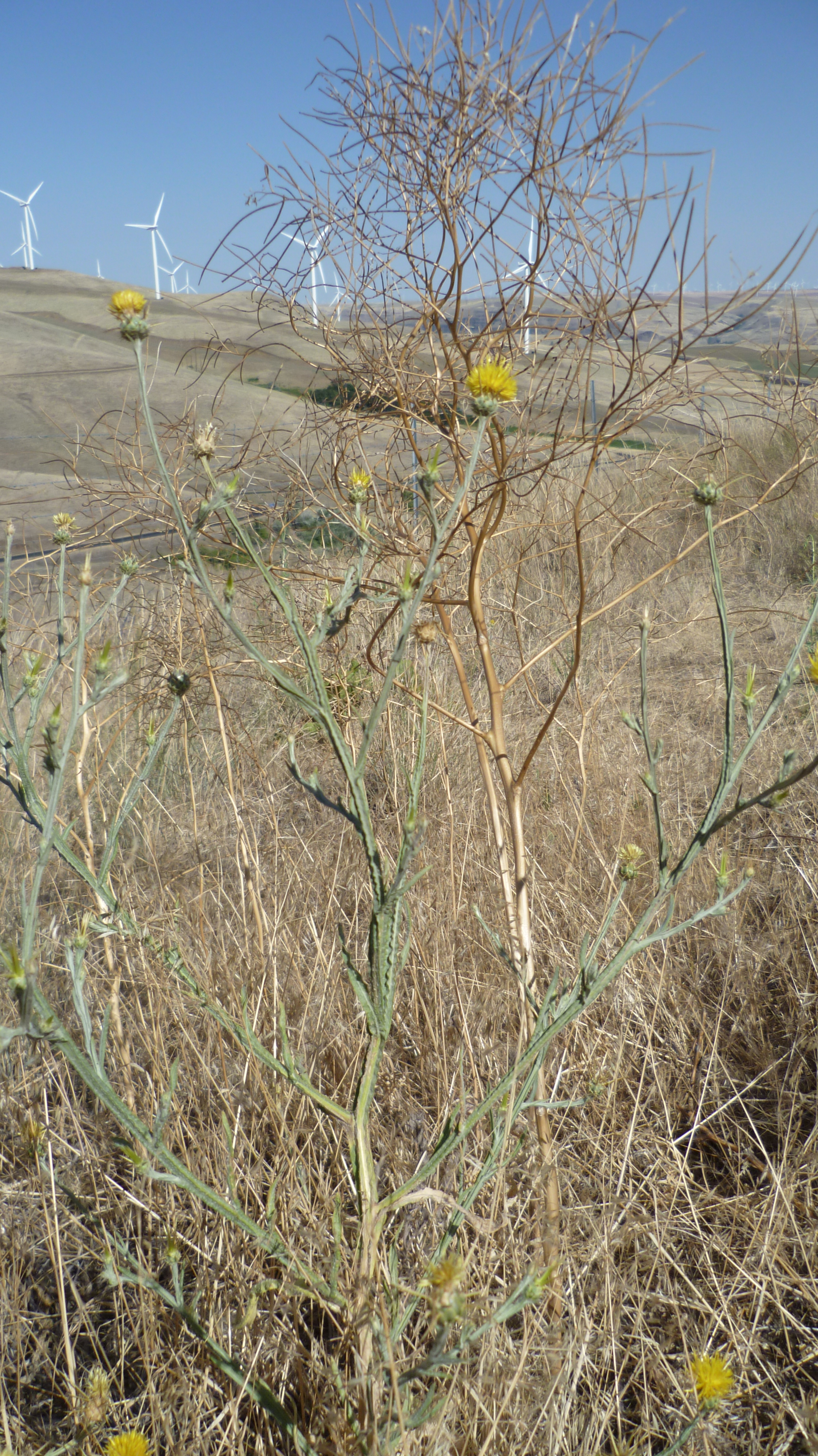|
Nigropallidal Encephalomalacia
Nigropallidal encephalomalacia or Chewing disease is a neurological condition that affects horses that have eaten certain toxic plants. Affected animals are unable to prehend food because of lip and tongue paralysis, and may appear to keep their jaws open with the tongue protruded because of reduced jaw tone. Some horses may appear to show their upper teeth because of increased hypertonicity (increase muscle tone) of the facial and upper lip muscles. Other animals may show severe depression and carrying their heads low. Because poisoned horses are unable to eat, these animals become weakened and ultimately die of starvation. The principal cause is thought to be prolonged ingestion of ''Centaurea solstitialis'' (yellow star-thistle) or ''Rhaponticum repens'' (creeping knapweed or Russian knapweed) which leads to the development of Parkinson's disease like symptoms. The development of the disease typically occurs when the toxic plant is more than 50% of the horse's diet over a protra ... [...More Info...] [...Related Items...] OR: [Wikipedia] [Google] [Baidu] |
Centaurea Solstitialis
''Centaurea solstitialis'', the yellow star-thistle, is a species of thorny plant in the genus '' Centaurea'', which is part of the family Asteraceae. A winter annual, it is native to the Mediterranean Basin region and invasive in many other places. It is also known as golden starthistle, yellow cockspur and St. Barnaby's thistle (or Barnaby thistle). Description ''Centaurea solstitialis'' is an annual herb from the family Asteraceae. During the vegetative stage it forms a rosette of non-spiny leaves, between in diameter. As the summer approaches, it produces a flowering stem up to in height. The leaves at the base are lobed and range between in length, while the ones on the stem are unlobed and smaller. Between May and October, the stem produces numerous spinous flower heads (capitula) about across, containing between 10–50 yellow flowers, with spines between . Flowers within capitula are pollinated by insects and each capitula produces 10–50 seeds, some with and som ... [...More Info...] [...Related Items...] OR: [Wikipedia] [Google] [Baidu] |
Rhaponticum Repens
''Rhaponticum repens'', synonym ''Acroptilon repens'', with the common name Russian knapweed, is a bushy rhizomatous perennial, up to 80 cm tall. Stems and leaves are finely arachnoid-tomentose becoming glabrous and green with age. The rosette leaves are oblanceolate, pinnately lobed to entire, 2–3 cm wide by 3–8 cm long. The lower cauline leaves are smaller, pinnately lobed; the upper leaves become much reduced, sessile, serrate to entire. The heads are numerous terminating the branches. Flowers are pink to purplish, the marginal ones not enlarged. The outer and middle involucral bracts are broad, striate, smooth with broadly rounded tips; the inner bracts are narrower with hairy tips. Pappus present with bristles 6–11 mm long. Fruit is a whitish, slightly ridged achene. Russian knapweed is a deep-rooted long-lived perennial. Some stands have been in existence for 75 years. It forms dense colonies in cultivated fields, orchards, pastures, and roadsides. A na ... [...More Info...] [...Related Items...] OR: [Wikipedia] [Google] [Baidu] |
Parkinson's Disease
Parkinson's disease (PD), or simply Parkinson's, is a long-term degenerative disorder of the central nervous system that mainly affects the motor system. The symptoms usually emerge slowly, and as the disease worsens, non-motor symptoms become more common. The most obvious early symptoms are tremor, rigidity, slowness of movement, and difficulty with walking. Cognitive and behavioral problems may also occur with depression, anxiety, and apathy occurring in many people with PD. Parkinson's disease dementia becomes common in the advanced stages of the disease. Those with Parkinson's can also have problems with their sleep and sensory systems. The motor symptoms of the disease result from the death of cells in the substantia nigra, a region of the midbrain, leading to a dopamine deficit. The cause of this cell death is poorly understood, but involves the build-up of misfolded proteins into Lewy bodies in the neurons. Collectively, the main motor symptoms are also known as ... [...More Info...] [...Related Items...] OR: [Wikipedia] [Google] [Baidu] |
Sesquiterpene Lactone
Sesquiterpene lactones (SLs) are a class of sesquiterpenoids that contain a lactone ring. They are most often found in plants of the family Asteraceae (daisies, asters). Other plant families with SLs are Umbelliferae (celery, parsley, carrots) and Magnoliaceae (magnolias). A collection of colorless, lipophilic solids, SLs are a rich source of drugs. They can be allergenic and toxic in grazing livestock causing severe neurological problems in horses. Some are also found in corals such as '' Maasella edwardsi''. Types Sesquiterpene lactones can be divided into several main classes including germacranolides, heliangolides, guaianolides, pseudoguaianolides, hypocretenolides, and eudesmanolides. Examples Artemisinin, a new, highly-effective anti-malarial compound, is a sesquiterpene lactone found in ''Artemisia annua''. Lactucin, desoxylactucin, lactucopicrin, lactucin-15-oxalate, lactucopicrin-15-oxalate are some of the most prominent found in lettuce and spinach, giving ... [...More Info...] [...Related Items...] OR: [Wikipedia] [Google] [Baidu] |
Victoria, Australia
Victoria is a state in southeastern Australia. It is the second-smallest state with a land area of , the second most populated state (after New South Wales) with a population of over 6.5 million, and the most densely populated state in Australia (28 per km2). Victoria is bordered by New South Wales to the north and South Australia to the west, and is bounded by the Bass Strait to the south (with the exception of a small land border with Tasmania located along Boundary Islet), the Great Australian Bight portion of the Southern Ocean to the southwest, and the Tasman Sea (a marginal sea of the South Pacific Ocean) to the southeast. The state encompasses a range of climates and geographical features from its temperate coastal and central regions to the Victorian Alps in the northeast and the semi-arid north-west. The majority of the Victorian population is concentrated in the central-south area surrounding Port Phillip Bay, and in particular within the metropolitan area ... [...More Info...] [...Related Items...] OR: [Wikipedia] [Google] [Baidu] |


